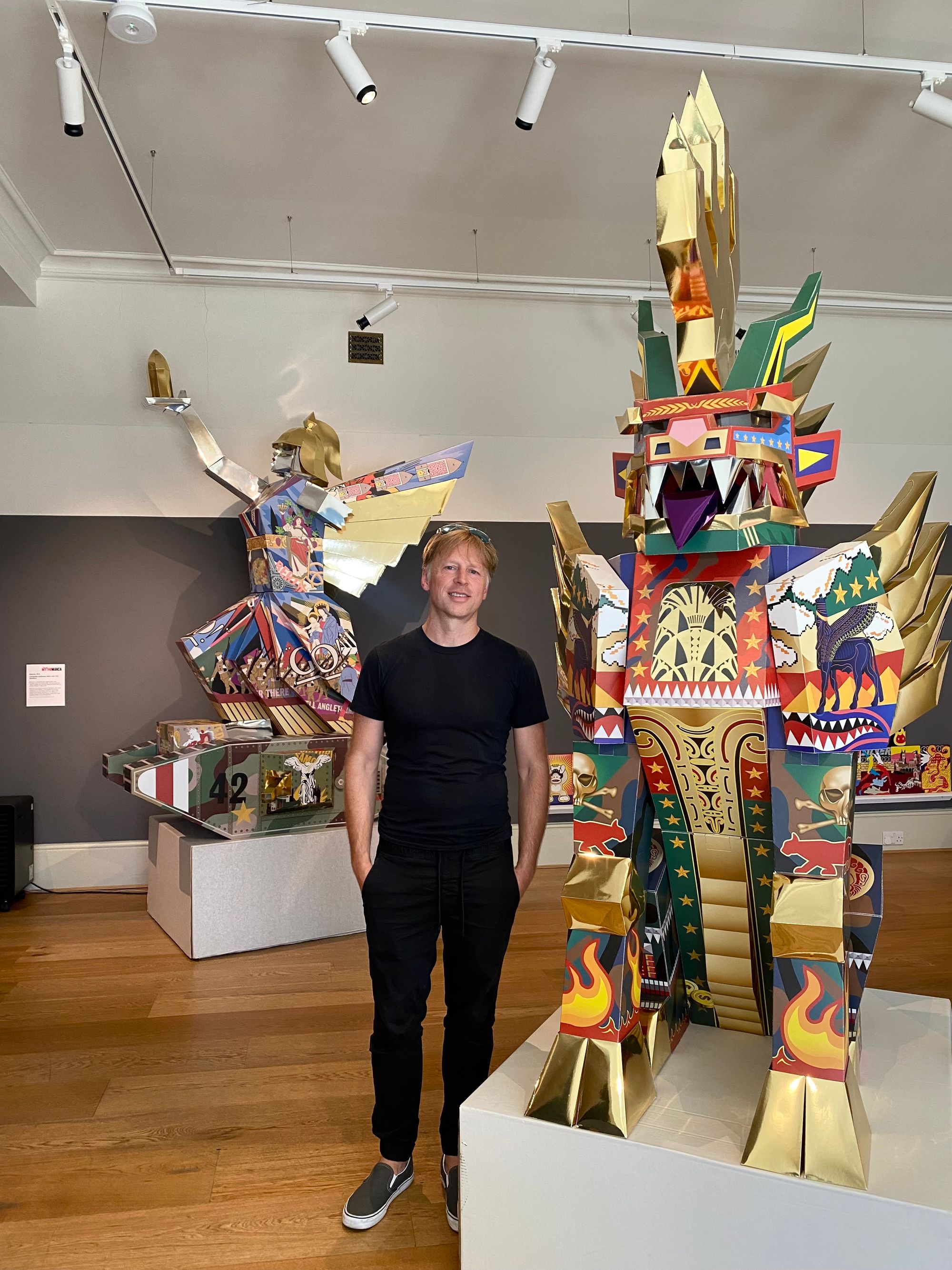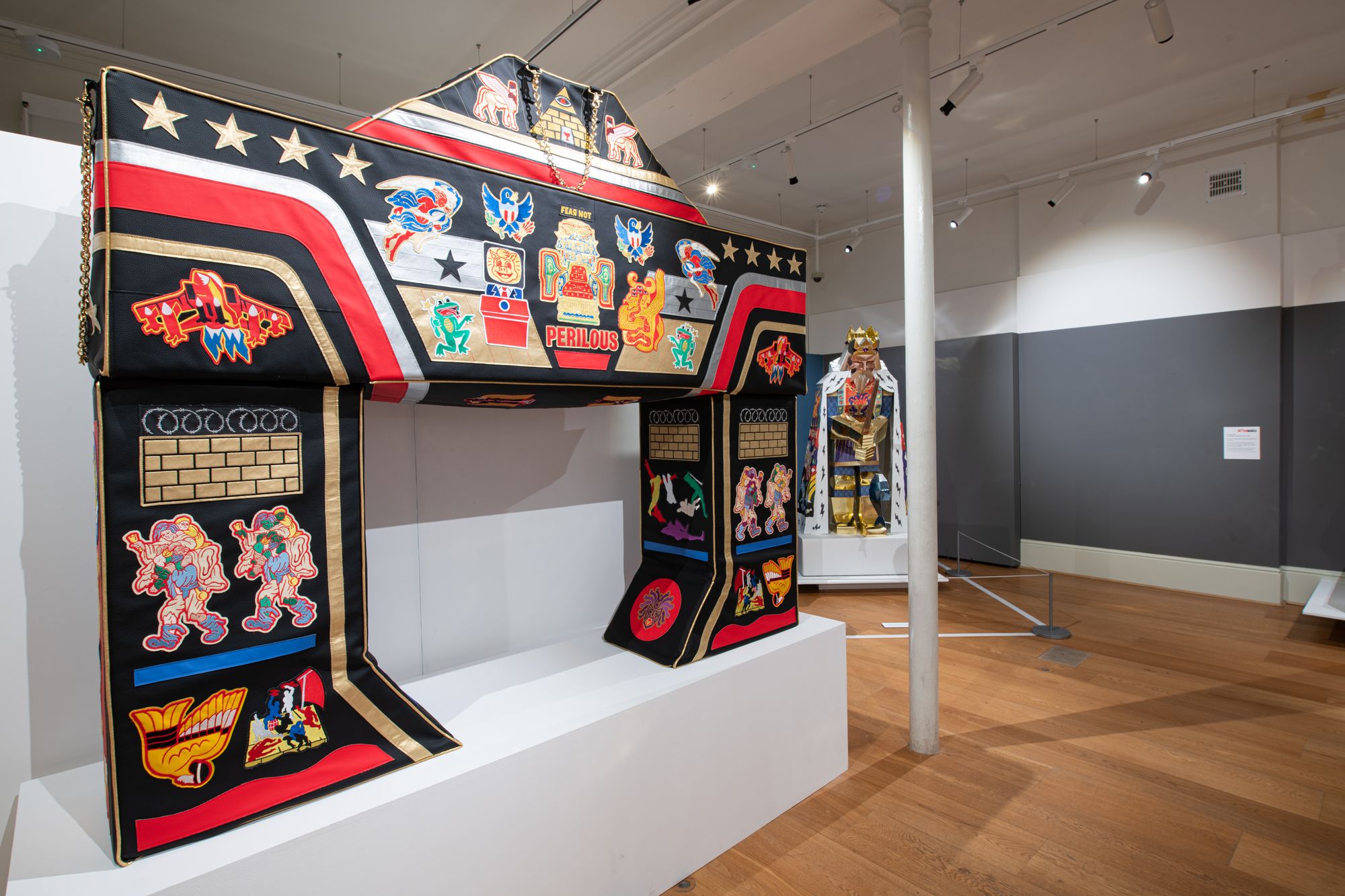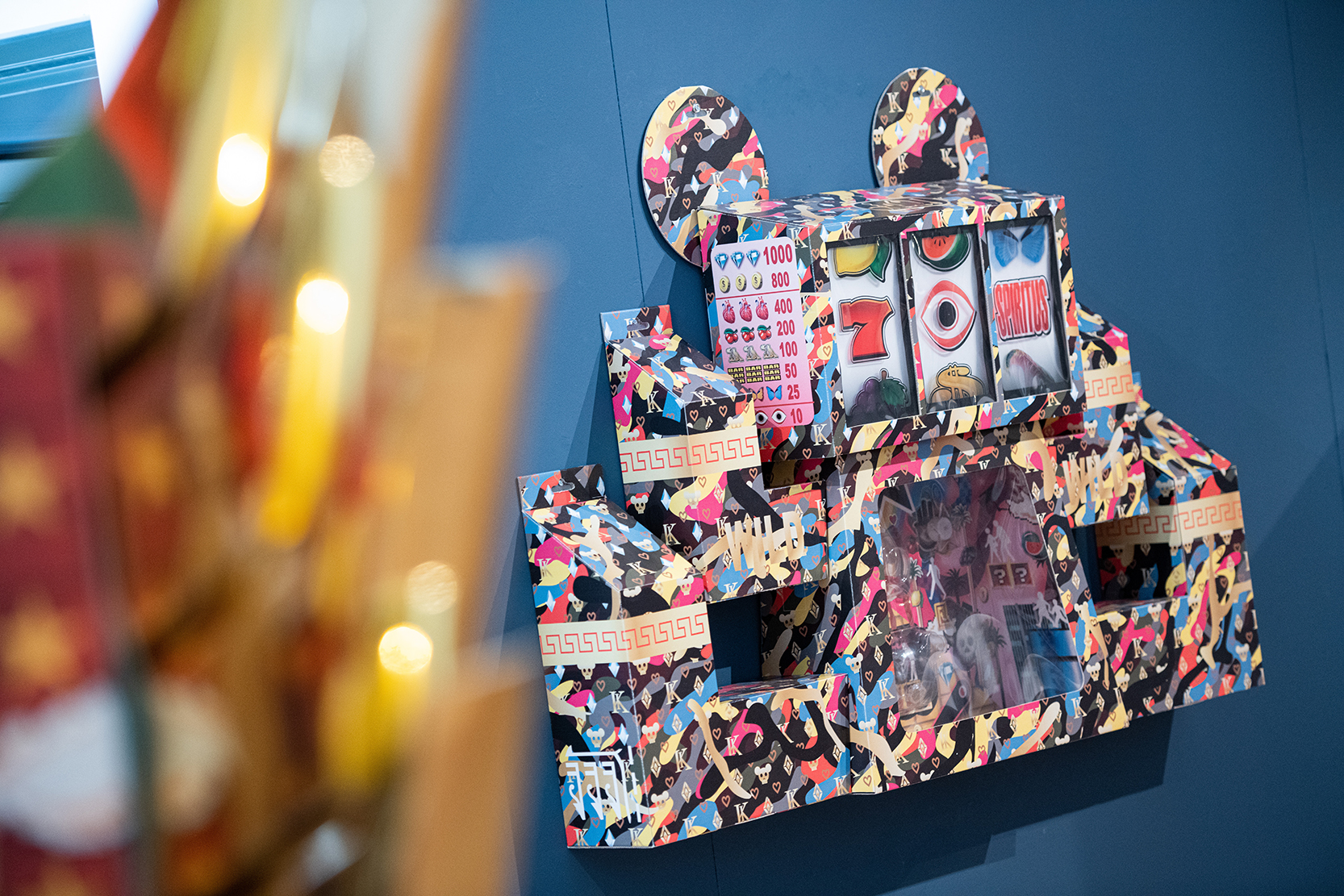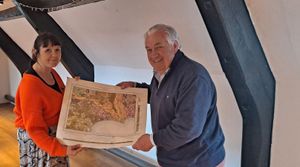Part one: Inspiration.
In this piece, we delve deeper into the ideas and inspiration of Canadian artist, Ian Kirkpatrick, the man behind the Mythomania exhibition, now on at the Willis Museum and Sainsbury Gallery in Basingstoke.
Funded by a grant from Arts Council England, Mythomania is a new body of 2D and sculptural work. Through a reimagining of ancient iconography and mythical narratives in contemporary formats, we’re asked to draw comparisons and question what myths we’re sold in today’s social political landscape.
Mythomania is currently on display until 16 October, so don’t miss out!
What was the driving force to move your art career from Canada to England?
Although I earned by bachelor’s degree in Fine Art in Canada in 1998, I actually didn’t practice any art until I moved to England in 2007 (with my wife, so she could do her PhD at the University of Southampton). Once in the UK, I became friends with several artists and decided to start creating my own work. Initially, I was just making fine art in my spare time while doing freelance graphic design…but over time I became a full-time fine artist. The arts funding in England is generally much better than in Canada, so there are more exhibitions to participate in and more opportunities to showcase artwork publicly. England is a very supportive country, in terms of giving emerging artists a chance to build their careers. Certainly, it has been very supportive to me!

Have any encounters with ancient artworks/ archaeology during your travels been particularly captivating?
As a graphic artist I’ve worked with several archaeological projects and was the lead designer at a couple of UNESCO sites – at Çatalhöyük in Turkey, and Memphis in Egypt. In terms of its effects on my art, Egypt has probably had the greatest impact. Ever since childhood, I was captivated by the mythology and mystery of ancient Egypt – and honestly, it’s just as impressive (or more so) in person. Being able to explore inside the pyramids at Giza, and into the underground tombs in Luxor, was a special experience. I think the way the ancient Egyptians structured data and imagery has been very influential upon my work. My art often contains repeating hieroglyphs and symbols that explore narratives and mythologies within contemporary Western culture.

Do you think there is a reason why ancient mythology stills holds so much precedence in contemporary society?
Ancient myths often inspire feelings of mystery and awe in us – in large part because of their associated imagery and symbolism. I think we re-use these symbols in modern contexts because they imbue our artworks, objects, institutions or brands with a kind of potent energy and power. Examples of this might include the “Eye of Providence” on the American dollar bill, or the Gorgoneion (Medusa head) on the Versace logo. For me, there is also a clear similarity between ancient and modern mythologies; these could include fictional mythologies such as what we see in Star Wars or The Matrix, or some of the more fantastical fake-news stories that spread so easily on the internet. I think people throughout history have been drawn to the feeling that there are grand and mysterious forces (whether they be gods, spirits, aliens, secret government agencies, evil corporations, etc.) that control or influence our existences beyond the visible, everyday world.






